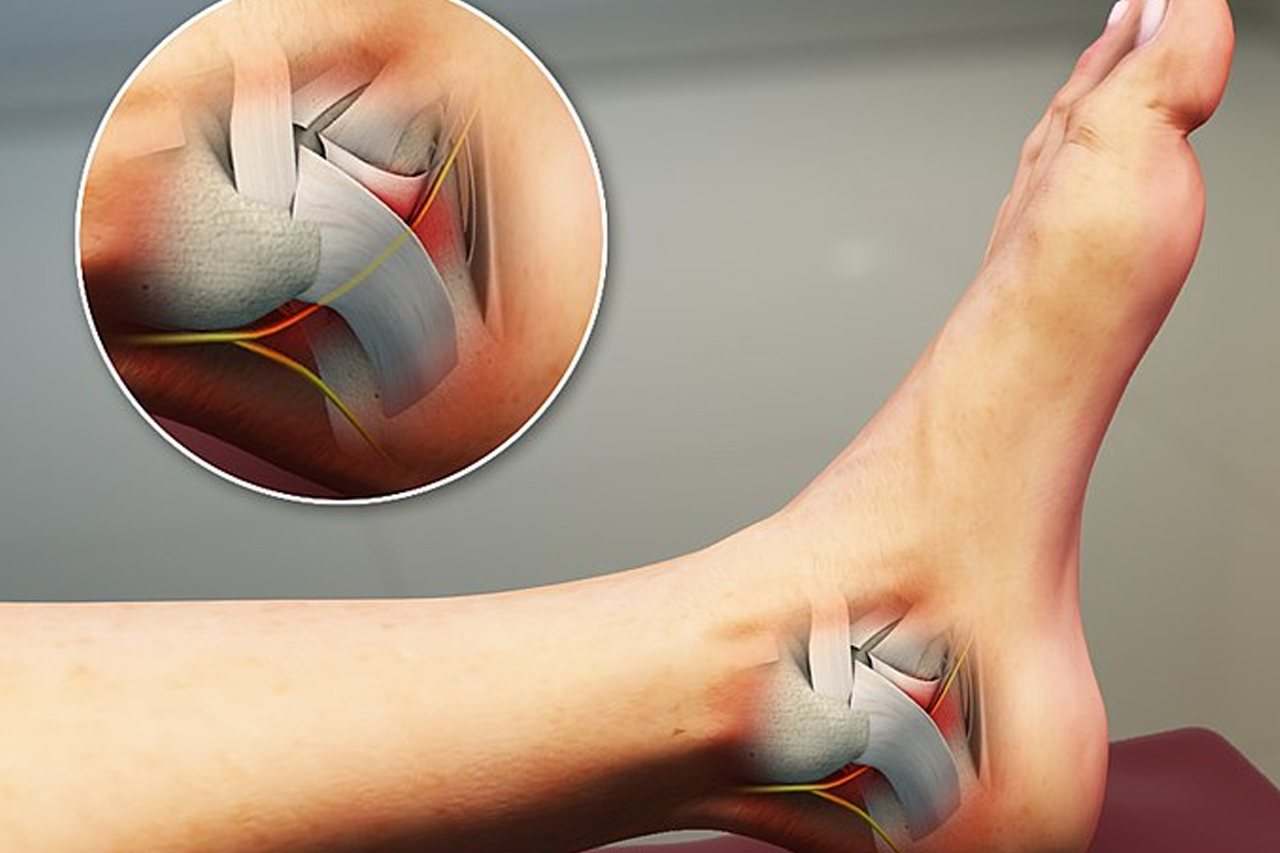
Tarsal Tunnel Syndrome
Tarsal tunnel syndrome is a rare disorder caused by damage to the tibial nerve, one of the largest nerves of the body or its branches, usually due to compression as it passes through the tarsal tunnel a narrow passage bound by bone and soft tissue that lies on the inside of the ankle.
Disease Overview
However, the term tarsal tunnel syndrome is often broadly applied to any pain along the tibial nerve, which can result due to many factors causing the pressing of the nerves.
Signs & Symptoms
Symptoms can differ from person to person and can emerge suddenly in some cases, while in others, they can develop gradually. Some people may experience an acute, shooting pain along the tibial nerve, which branches from the sciatic nerve and goes down the lower leg to the ankle and eventually the foot it can be severe enough to cause a person to limp, while others may suffer radiating pain that cannot be pinpointed to a specific location.
Additionally, patients may experience numbness in the affected area or feel a burning or tingling sensation, typically described as "pins and needles."
In some individuals, symptoms may affect one spot, like the inside of the ankle. In other individuals, symptoms can affect the ankle, heel and foot. For example, pain may radiate from the ankle down to the heel or even the foot, depending on which section of the nerve is affected. Less frequently, pain may radiate up from the ankle to the calf.
Causes
The condition is caused by any disorder that compresses the tibial nerve or one of its branches as it travels through the tarsal tunnel, and factors like space-occupying lesions or masses that may raise the pressure in the tunnel, like tumours of fat tissues or nerve cells.
Additionally, bony growth in the tarsal tunnel, enlarged veins and inflammation of the synovial membrane can also cause tarsal tunnel syndrome.
Individuals who have severely flat feet are at a greater risk of developing tarsal tunnel syndrome than the general population because the flattened “fallen” arches can stretch the tibial nerve.
Diagnosis
Tarsal tunnel syndrome is identified based on distinctive symptoms, complete patient history, thorough clinical evaluation, and a variety of specialised testing, including MRI and Electromyography.
Tinel's tests where a doctor taps or applies pressure to the tibial nerve indicate tarsal tunnel syndrome if it creates tingling or "pins and needles" sensations in the foot or toes.
Treatment
Rest, contrast baths, nonsteroidal anti-inflammatory medications, and nonrigid devices such as splints or braces used to protect or rectify the foot posture are prescribed as part of the treatment. In some cases, changing to looser footwear to reduce tightness can relieve pain associated with tarsal tunnel syndrome.
In some cases, doctors may also prescribe anaesthetic injections to reduce pain or corticosteroids to reduce inflammation.
Individuals with tarsal tunnel syndrome due to flat feet may benefit from orthotics designed to provide support or restore the natural arch of the foot.